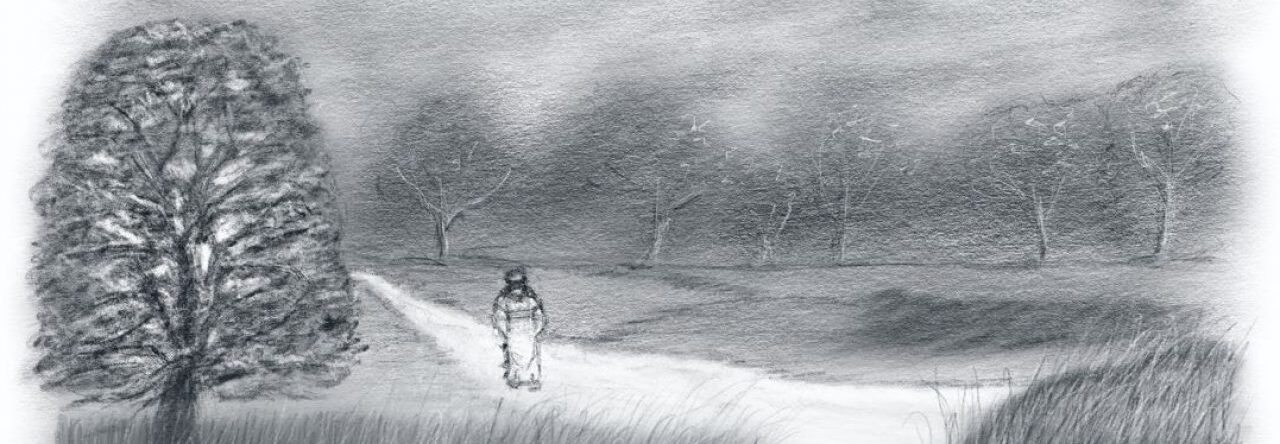Lent Reflection – Part 5 of 6
BY: Mr. Mark Connolly, OP
It is tempting here to focus on The Stations of the Cross – it seems natural to do so given that Jesus carrying the cross takes up stations 2 through 9. But, as I keep asking, what is the mystery here? It was common for the condemned to carry at least the cross beam as one more humiliation to endure – carrying the implement by which you will be slowly tortured to death to the site of the execution.
Jesus was neither the first nor the last human to suffer this ignominy.
You may be surprised to learn that only in the Gospel of John are we specifically told that Jesus carried his own cross. Again, the descriptions are brief.
As they were marching out, they came upon a man of Cyrene, Simon by name; this man they compelled to carry his cross.
Mt 27:32
And they compelled a passer-by, Simon of Cyrene, who was coming in from the country, the father of Alexander and Rufus, to carry his cross.
Mk 15:21
And as they led him away, they seized one Simon of Cyrene, who was coming in from the country, and laid on him the cross, to carry it behind Jesus.
Lk 23:26
In the Gospel of John, however, no mention is made of Simon of Cyrene.
So they took Jesus, and he went out, bearing his own cross, to the place called the place of a skull, which is called in Hebrew Golgotha.
Jn 19:17
If you are familiar with the Stations of the Cross having attended this moving prayer on a Friday during Lent, you may be thinking, “Wait a minute, what about the falling (stations 3, 7, and 9), Jesus meeting his mother (station 4), and the veil of Veronica (station 6)?”
Well, the Evangelists do not mention these things.
The Eighth Station, Jesus meets the women of Jerusalem, is in Luke’s Gospel:
And there followed him a great multitude of the people, and of women, who bewailed and lamented him. But Jesus turning to them said, “Daughters of Jerusalem, do not weep for me, but weep for yourselves and for your children. For behold, the days are coming when they will say ‘Blessed are the barren, and the wombs that never bore, and the breasts that never gave suck!’ Then they will begin to say to the mountains, ‘Fall on us’; and to the hills, ‘Cover us.’ For if they do this when the wood is green, what will happen when it is dry?’
Lk 23:27-31
Ok, whoa!, what does all that mean?
“For if they do this when the wood is green, what will happen when it is dry?” According to a Navarre Bible commentary, the green wood refers to innocence and dry wood refers to the wicked. One does not generally burn green wood. In 1 Peter 4:17f we read:
17 For the time has come for judgment to begin with the household of God; and if it begins with us, what will be the end of those who do not obey the gospel of God? 18 And “If the righteous man is scarcely saved, where will the impious and sinner appear?” 19 Therefore let those who suffer according to God’s will do right and entrust their souls to a faithful Creator.
The commentary on this in the Didache Bible, which commentary is based on the Catechism, says, “In order to share in Christ’s Resurrection, we must also share in his Cross.”
Yeah, so much for prosperity gospels. Christ does not promise us wealth, health and happiness. Rather he promises us his cross. Or rather, he invites us to take up our cross: Mt 10:38, Mt 16:24, Luke 9:23, Luke 14:27.
We can do quite the little Bible Study using a Bible with a good commentary and cross references and digging into the meaning of taking up our cross.
I will close with a quote that I think sums up things to consider when contemplating this mystery:
The Christian ideal has not been tried and found wanting. It has been found difficult; and left untried.
What’s Wrong With the World, V. The Unfinished Temple By G.K. Chesterton
###
Next, Jesus Dies On The Cross.

